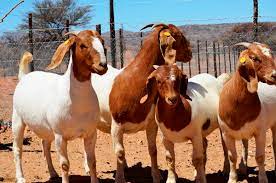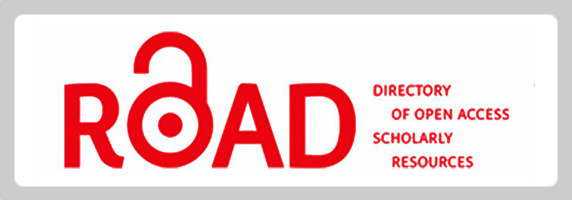Assessment on Production Objectives, Breeding Practices and Farmer’s Trait Preference of Indigenous Goat in Three Districts of South Gondar Zone, Amhara Region, Ethiopia
Abstract
The study was conducted three districts of South Gondar zone, Amhara region, Ethiopia with the objective of identifying production objectives, breeding practice and farmer’s trait preference of indigenous goat. The zone was stratified into highland, midland and lowland agro-ecology and then selected one district from each agro-ecology. Data were collected from 171 households through semi structured and structured questionnaires, focal group discussions and secondary sources. The data were analyzed using SPSS version 20 and SAS version 9.3 (2014). Mixed crop-livestock production system which accounted for 98.8% was the main agricultural production system in the study area. Results revealed that source of income generation (0.48) was the primary production objectives of framers in the study area followed by meat for home consumption (0.34), saving (0.10), ceremony (0.05) and manure (0.03). Body conformation was the most preferable trait in all agro-ecology of the study area followed by reproduction rate and adaptability in highland, while coat color and reproduction rate for midland and lowland. Most (72.22%) of the farmers in the study area were used uncontrolled mating system. About 32.35% of farmers in the study area had their own breeding buck while 67.65% of farmers shared breeding bucks with their neighbors. The inbreeding coefficient of indigenous goat in private and communal grazing system of the study area was 0.14 and 0.10, respectively. In general, from the current study, it could be conclude that trait preference and breeding practice of farmers in the study area was traditional, and inbreeding coefficient of indigenous goat in the private and communal grazing system was high comparable with the maximum acceptable level of 0.063 (Armstrong, 2006). Therefor further investigation should be undertaken to minimize inbreeding coefficient of indigenous goat.
Downloads
References
Adane Hirpa and Girma Abebe. 2008. Economic significance of sheep and goats. Pp. 325-340. In: Alemu Yami and R C Merkel (eds.). Sheep and Goat Production Handbook of Ethiopia.ESGPIP (Ethiopian sheep and goat productivity improvement program). Branna Printing Enterprise. Addis Ababa, Ethiopia.
Ahmed, S., 2013. On-farm phenotypic and production system characterization of indigenous goats in Horro Guduru Wollega zone, western Ethiopia. M.Sc. Thesis Submitted to School of Graduate Studies, Haramaya University, Ethiopia
Alemayehu, R., 1993. Characterization (phenotypic) of indigenous goats and goat husbandry practices in East and South East Ethiopia. M.Sc. Thesis, Alemaya University of Agriculture, Alemaya, Ethiopia. pp135.
Armstrong, J.B., 2006. Inbreeding: Why we will not do it? Accessed on June 13, 2010from http://www.parispoodles.com/Inbreeding.html.
Bekalu M. (2014). Phenotypic characterization of indigenous goat types and their production system in West Gojam Zone of Amhara region, Ethiopia. MSc Thesis Haramaya university.109p.
Belete, A., 2013. On farm phenotypic characterization of indigenous goat types and their production system in bale zone of Oromia region, Ethiopia. M.Sc. Thesis. School of Graduate Studies in Haramaya University. Haramaya, Ethiopia.
Bett RC, Kosgey IS, Kahi AK, Peters KJ .2011. Definition of breeding objectives and optimum crossbreeding levels for goats in the smallholder production systems. Small Rumin. Res. 96:16-24.
CSA (Central Statistics Agency). 2016. Agricultural sample survey. Volume II, Report on livestock and livestock characteristics. Statistical bulletin, 570, April 2013, Addis Ababa, Ethiopia. CSA (Central Statistics Agency).
FARM-Africa, 1996. Goat Types of Ethiopia and Eritrea. Physical description and management systems. Published jointly by FARM-Africa, London, UK and International Livestock Research Institute, Nairobi, Kenya. 76pp.
Galal, S., 2005.Biodiversity in goats. Small Ruminant Research. 60(1-2):pp75-81. Ain Shams University. Cairo, Egypt.
Gurmessa, U, G., Hundesa, F., Duguma, M. and Muleta, M., 2011. Analysis of goat production situation at Arsi Negele Woreda, Ethiopia. Journal of Stored Products and Postharvest Research, 2(8), pp.156-163.
Hulunim Gatew, 2014. On-farm phenotypic characterization and performance evaluation of Bati, Borena and Short eared Somali goat populations of Ethiopia. M.Sc. Thesis submitted to the School of Animal and Range Sciences, School of Graduate Studies in Haramaya University. Haramaya, Ethiopia. Pp55-56.
IBC (Institute of Biodiversity Conservation), 2004. The State of Ethiopia’s Farm animal Genetic Resources: Country Report. A Contribution to the First Report on the State of the World’s Animal Genetic Resources. IBC, May 2004. Addis Ababa, Ethiopia.
Ilatsia ED, Roessler R, Kahi AK, Piepho HP, Zárate V (2012). Production objectives and breeding goals of Sahiwal cattle keepers in Kenya and implications for a breeding program, Trop. Anim. Health Prod. 44:519-530.
Kosgey, I.S. and Okeyo, A.M., 2007. Genetic improvement of small ruminants in low-input, smallholder production systems: Technical and infrastructural issues. Small Ruminant Research, 70(1), pp.76-88.
Kosgey, I.S., 2004. Breeding objectives and breeding strategies for small ruminant in the tropics. PhD Thesis, Animal Breeding and Genetics Group. Wageningen University, the Netherlands.
Mengistie, T., 2008.On-farm performances of Washera sheep at Yilmanadensa and Quarit districts of the Amhara National Regional State. MSc Thesis, Hawssa University, Ethiopia. pp: 62.
Philipsson, J, Rege JEO, Okeyo AM., 2006. Sustainable breeding programmes for tropical farming systems. In: J. M. Ojango, B. Malmfors and A.M. Okeyo (eds.). AGTR - version 2, International Livestock Research Institute, Nairobi and Swedish University of Agricultural Sciences, Uppsala, Sweden.
Solomon, A., 2014. Design of community based breeding programs for two indigenous goat breeds of Ethiopia. Doctoral Thesis. Universitat fur Bodenkultur Wien University of Natural Resources and Life Sciences, Vienna.Pp34-35.
Yadeta, N., 2016. Production and reproduction performances, producers’ trait preferences and marketing system of small ruminants in Ada Barga and Ejere Districts of west Shoa Zone, Ethiopia. M.Sc. Thesis, Jimma University.
Yaekob, L., Kirmani, M. A. and Birhanu, B., 2015.Participatory Characterization of the Woyto-Guji Goat and Its Production Environment around Northern Omo, Ethiopia. The Journal of Agriculture and Natural Resources Sciences, 2(2), 455-465.

Copyright (c) 2021 Alebel Mulia

This work is licensed under a Creative Commons Attribution-NonCommercial-NoDerivatives 4.0 International License.










